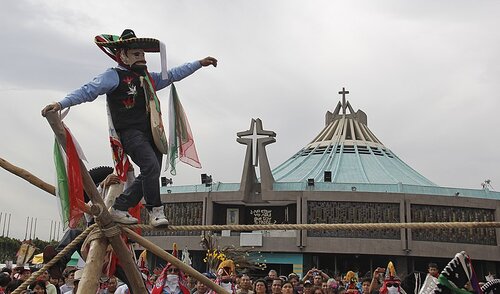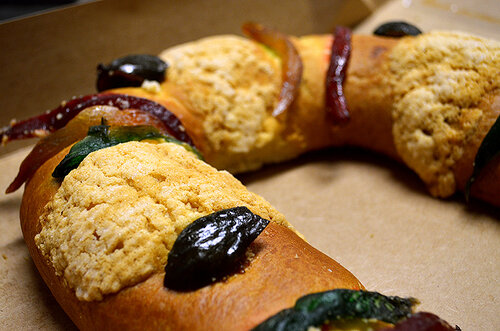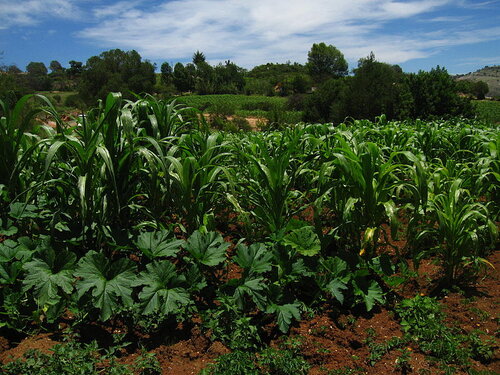Three Interesting Facts About Mexico You Probably Didn’t Know
The things we know and the way we think often say more about us and the world we live in than about the things themselves.
In this article, we’ll talk about some interesting facts many people don’t know about Mexico. The way I tend to think of my country is influenced by different elements. Things that often make it difficult to appreciate my country with a broader perspective. I hope these insights will help you see Mexico in a new light.
1. The Mexican Peso was the First Global Currency and Base for the US Dollar
With the colonization of the Americas, the Spanish Empire had the largest supply of silver in the world at their disposal. This precious metal was used to make the Real de a 8, also known as Peso de Ocho or simply Peso, in the Mexico mint.
In English, the Peso was called the Spanish Dollar due to the custom of naming currencies after the Thaler (in German) or Tolar (in Czech and Slovak), a coin first minted in Bohemia in 1517.
Back then, everybody had their eyes on Chinese goods. By contrast, there was only one thing that China didn’t have but wanted: large amounts of money to monetize their economy. The Peso, with its standardized purity and weight, as well as its anti-fraud features – its edges were raised and serrated to prevent clipping and shaving – was ready to meet this demand. No other currency had enough supply to do this.
“In the end, it was silver from Spanish American mines that fueled the Chinese economy for more than two centuries.”*
The importance of the Peso in Asia was such that it became the base for both the Yuan and Yen, to the point that they are named after it – both names mean “round.” The same happened with the Malaysian Ringgit, term that means “jagged”, a reference to the Peso’s serrated edges.
With this silver standardized coin and the discovery of the tornaviaje – the route back from Asia to the Americas – China became an integral part of the trade network. Commerce acquired distinctly global dimensions and by the 18th Century the Peso had become the first global currency.
“Mexico was arguably the center of the world, the place where Asia, Europe and the Americas all met, and where people intermingled and exchanged everything from genes to textiles.”* -RutadePlata.asia
How is it that the Peso was replaced by the US Dollar? Well, the US Dollar was created in 1792 following the model of the Peso due to its stability and international reputation. In fact, the Peso continued to be legal tender in the US until 1857. In other words, the Peso and the US Dollar were originally the same coin. So it’s no surprise that they are identified by the same symbol ($), which is the result of abbreviating the word Peso with the superposition of the P and the S.

Traces of the influence of the Peso had over the Dollar could also be found in the pricing of equities on the US stock market, as it was reported in eighths, in accordance with the base-eight denomination established by the Peso de Ocho. This persisted until 1997.
2. The Mexican Flag is Based on the Virgin of Guadalupe
We all at some point are taught in school the meaning of our flag. I always felt that the most relevant element of the Mexican flag was the national coat of arms, as it has a well known historical relevance – it commemorates the foundation of Tenochtitlan, the city of the Aztecs. The colors, on the other hand, felt too random. Long ago I was told that each color represented universal values, such as “unity”, “hope”, or “peace”, Which, honestly, feels just too detached and it’s difficult to relate to.
However, some years ago, I somehow ended up talking about this with a stranger in the street and he said “The colors of the Mexican flag come from the Virgin of Guadalupe, of course. Just like the colors of the Argentinian flag come from the Virgin of Lujan.” It may be obvious for some people, but I want to believe I won’t be the only one shocked by this fact. It makes so much sense and explains a lot!
While the colors of the Virgin of Guadalupe nowadays aren’t clearly red and green, there is an element in the story of her apparitions that leads me to think they must be. Right before Juan Diego – a humble native man – saw the Virgin for the first time, he heard the singing of many birds, but one in particular stood out: the signing of the Tzinitzcan, also known as Trogón Mexicano or Quetzal Michoacano, a bird that is noticeably red, green and white. I think the relationship of the Virgin of Guadalupe with this bird is not only about the singing, but also about the colors.
It’s important to point out as well that, since the beginning, the Virgin of Guadalupe has been an essential part of the development of the Mexican identity. In a time when the “new” continent was severely criticized – European intellectuals, such as Cornelius de Pauw, stated that the natives had no intellect nor soul, and even the soil was sterile – the apparition of the Virgin of Guadalupe came to disprove all these negative ideas about the Americas. For people of New Spain – Mexico’s former name as Spanish colony – this land and these people were prosperous and valuable to such an extent, that the Mother of God honored them with an apparition. There wasn’t a better way to legitimize itself in the eyes of the Catholic Western world, that New Spain was now part of.
Thanks to these attacks and the injustice they experienced under Spanish rule, the criollos – people of Spanish descent but born in the Americas – united to celebrate their sovereignty and, little by little, develop a national identity. Great figures, like Sor Juana Inés de la Cruz and Vicente María Velázquez, were part of this process.
When the time came to fight for independence from the Spanish Empire, the host of opponents to the regime identified themselves with the Virgin of Guadalupe and carried with them a banner with a picture of her on it. After that, the first flag of Mexico as an independent nation had the colors red, green, and white. This special link between the Virgin of Guadalupe and the Mexican flag is evident as can be seen at the New Basilica. There we find both symbols juxtaposed. With her red and green garments and her dark skin, the Virgin of Guadalupe is, without a doubt, much more than just a religious symbol to Mexico.

3. December Holidays Last a Whole Month
Latin Americans are party people. And although we party hard all year long, nothing is compared to the celebrations in December. In Mexico, we called this “party binge” Guadalupe – Reyes, because it starts on the Día de la Virgen de Guadalupe (December 12th) and ends on Día de Reyes, or the day of the Feast of the Three Kings (January 6th). In-between, we have the Posadas, Noche Buena, Navidad, and Año Nuevo.
We talked about the importance of the Virgin of Guadalupe previously, so it’s no surprise that the day Mexicans commemorate her is the biggest celebration we have with 7 to 10 million people attending each year. It takes place in the Tepeyac, where the Virgin appeared and where we now find several shrines in her honor. This means that people from all over the country, Central America and the US, start their pilgrimage to honor her weeks or even months in advance. Celebrations start on December 9th, the day of the first apparition of the Virgin. But the main festivity is on December 12th, the day when her picture was miraculously imprinted on the cloak of Juan Diego. At the stroke of midnight, people start singing Las Mañanitas, our traditional birthday song. Here you can find some great pictures of this celebration.
From December 16th to the 24th – that’s right, nine days in a row – we have Posadas, which means “lodge” or “lodging.” It’s a novenario (extended devotional prayer) that represents the nine-month pregnancy of Mary during which she and Joseph made a pilgrimage from Nazareth to Bethlehem.

Each night, Mexicans get together and start a procession to predesignated homes, one each night. Singing, processoners ask for lodging. People inside the house sing back to decline. The singing switches back and forth until the hosts agree to let the processioners in. Once inside, we eat tamales and drink atole and ponche. We also burn sparklers and break a piñata that has seven points, symbolizing the seven deadly sins.
The last Posada takes place on the 24th. This is Nochebuena or Christmas Eve. This is the day in which the main Christmas celebrations take place. Families get together to go to mass, have a huge dinner, and open their presents. The next morning, children open the presents they got from Santa and we get together again to finish the left overs. This is called recalentado (literally, reheated).
Then comes Año Nuevo or New Year, a night on which our next 365 days depend on. Mexicans believe our next year’s luck will be determined by what we do, or don’t do, during this night, so we have managed to develop a variety of rituals to make sure we finally meet the love of our life, travel around the world and, why not, also win the lottery.
To get rid of malas vibras or negative energy, Mexicans sweep the dust out of their homes and throw water out through doors and windows. If we want to travel, we run around the block carrying our things packed in suitcases. We even choose our underwear according to what we want! Yellow for money, red for love, and green for health. These traditions change from one family to another, but one of the most common traditions is to eat twelve grapes at midnight each of them representing our New Year’s resolutions. This dinner includes, of course, a recalentado on January 1st.
Finally, we have Día de Reyes on January 6th, the twelfth day of Christmas. With this celebration, we commemorate the day the three Wise Men met Jesus and gave him gifts acknowledging him as a King. On this day, children receive more gifts, this time from the three Wise Men. Then we get together to eat Rosca de Reyes or Kings’ Cake and drink hot chocolate. Inside this cake, small figurines that represent Baby Jesus are hidden. The people that get one of this on their slide, are ment to give tamales to the rest of the guests on Día de la Candelaria or Candlemas on February 2nd, the day when Jesus is presented at the temple. Two weeks after that, Lent begins. That’s when we show off that peculiar cross in our foreheads made of ashes. And, well, these celebrations are never really over. But December is without a doubt the month in which our calendars are full with parties.
The celebrations of Virgin of Guadalupe from the 9th to the 12th (these celebrations continue on the following days, though), the nine Posadas, Christmas, New Year and it’s recalentado, and finally the Day of the Three Wise Men, add up to seventeen parties. This, without counting the Christmas party at the office and the get-together with our colleges or high school friends that we cannot miss.
EXTRA FACT: Mexican Cuisine is Considered Intangible Cultural Heritage of Humanity
Apart from the 35 World Heritage Sites we find in Mexico, UNESCO recognized Mexican cuisine as an Intangible Cultural Heritage of Humanity, next to the Mediterranean Diet, the Japanese Washoku and other 19 food-related rituals. Personally, I have always been surprised by the simplicity of some of the things we eat. Is there anything better than having a freshly made tortilla with just a sprinkle of salt? But I’m also amazed by the complexity of some dishes that require hours of preparation and as many pairs of helping hands as possible.
It’s not only our traditional dishes that are recognized by UNESCO, but the entire food chain: from planting and harvesting to cooking and eating. We make use of two unique farming methods to grow our food. The first one is called milpa, and it consists of rotating swidden fields of corn, beans, and squash. These three crops are known as las tres hermanas or “the three sisters” because they are always grown together and each of them plays a role that benefits the other. Beans, for example, add nitrogen to the soil, which favors the growth of the corn plants.
The second method is the chinampa, a man-made farming islet in lake areas. It has begun to regain its importance as an urban farming model in the last few years. For instance, some of the most prestigious chefs – Enrique Olvera (Pujol), Elena Reygadas (Rosetta), Eduardo García (Máximo Bistrot) Gabriela Cámara (Contramar), and Jorge Vallejo (Quintonil) – have been working to recover and clean the soil and water of Xochimilco, a lake area in Mexico City, as well as to train farmers with better practices, and to promote fair trade.
Regarding traditional cooking processes, we have nixtamalization, in which corn is cooked in water with lime (alkali) to soften and hull the kernels. Besides softening the maize to make masa (dough), this process also increases the nutritional value of corn, as its proteins can only be absorbed once they’ve been transformed by the alkaline solution.
For all this to be possible, special utensils are needed. No tortillas could have been done without a metate and without molcajetes salsas wouldn’t be the same. Both allow us to martajar (to crush or to pound) the ingredients and get that delicious coarse, chunky texture. Also, our hot chocolate would be too watery and dull without the molinillo (grinder, mil), not to mention the comal for tatemar (roasting) and the clay and copper pots that add a special flavor to Mexican food.
As you can see, religion plays major role in Mexican culture. Sharing these interesting facts about my country with you has made me reflect on how many of our actions may be triggered more by a belief we inherited without question rather than by a belief we have reflected on. There are many aspects of my culture I tend to take for granted. If you haven’t already, I hope you get a chance to experience some of it yourself.
Thumbnail Image by Andrea Piacquadio from Pexels.








Related Posts
How to Defend Your Consumer Rights in Mexico With PROFECO
The Ultimate Guide to Tipping in Mexico
The 16 Best Things to Do in Barcelona